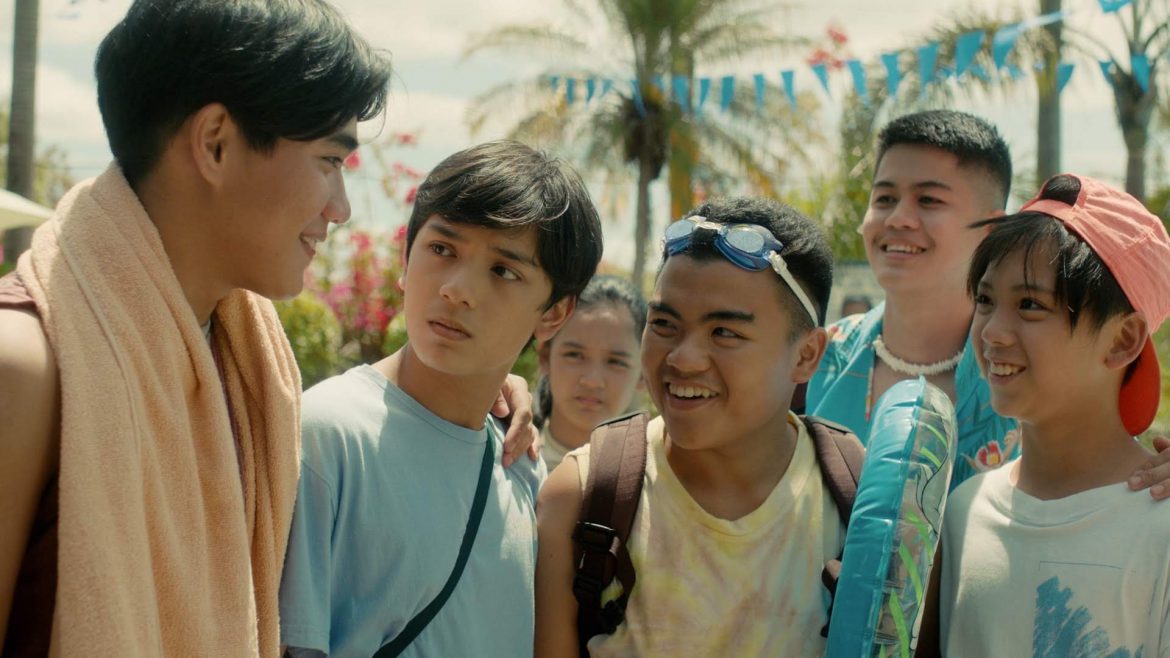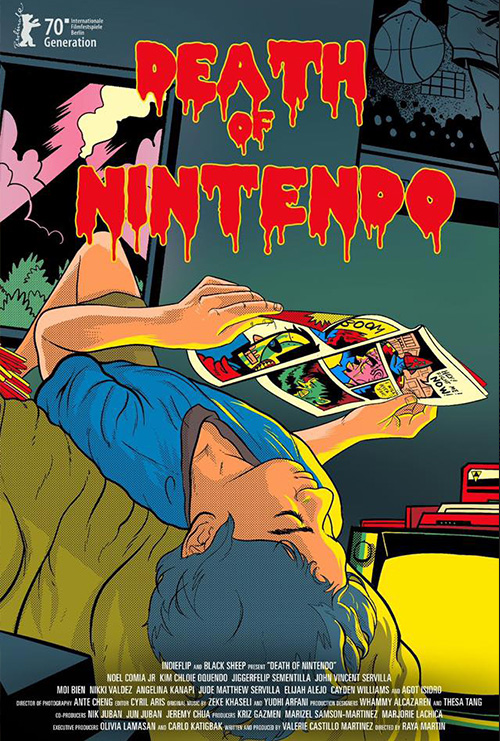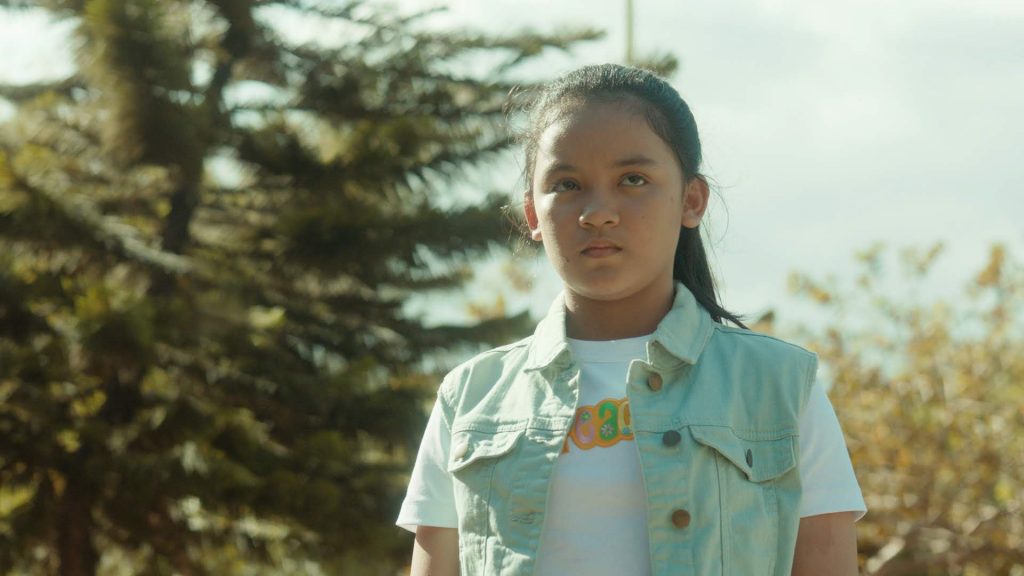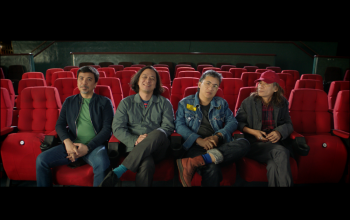“Death of Nintendo” is Ela Bicera’s first Raya Martin film and her first contribution to FPR as a film critic.
Death of Nintendo (2020) is a coming-of-age film that shows 90’s teenage nostalgia. I’m not sure if this is based on Director Raya Martin’s own story or if he’s basing it on the memories of events that occurred during the 90s, but surely people born in this decade will be very fond to see some stuff they recall in those years.
The film is centered around four 13-year olds, each one trying to figure out what it takes to be a cool teenager. The group has cute and wimpy Paolo (Noel Comia Jr.), kind and a bit pushover Gilligan (Jigger Sementilla), show-off leader Kachi (John Vincent Servilla), and Mimaw (Kim Oquendo), Gilligan’s smart sister. Together they all live happy and free, yet as hormones begin to enrage them, they encounter what typical teenagers would experience: afternoons playing nintendo games while sharing their first crushes, and an attempt at ghost-hunting.
If you grew up in the Philippines like me, you’d certainly recognize some games and teenage traditions shown in this film, like the different variations of the “white lady” (a ghost in a white dress) or “manananggal” (a half-bodied entity flying around whose aim is to eat flesh and body organs) stories, collecting pogs, drinking softdrinks on an ice plastic with straw and many more. While it’s fun to see favorite teenage memories, the film literally just focused on just showing that instead of telling a beautiful coming-of-age story. This film basically is meant to relive 90’s teenage moments during one of the biggest natural disasters in the country, and nothing more.
I also noticed how showing the volcanic reactions from time to time didn’t really have an impact on these four characters at all, aside from getting power interruptions whenever they play Nintendo games. This raised some geographical concerns with the setting of the film, because the place wasn’t shot at Zambales at all, or any locations where it was most affected by Mt. Pinatubo’s Eruption. Rather, it was shot in Taytay, Rizal, which is an hour away from Manila. I recognized the place immediately as a resident of Taytay myself. It was understandable that they chose this place because some locations here still resemble the 90’s setting, but I hope that the crew did not make it obvious that they didn’t go with the right locations, or it’s better if they did not enforce the setting near the volcano at all.
I wish I enjoyed the journey of the three boys together, but they really just followed the “cool teenager” trope until the end. It’s only Mimaw who remained searching for her own journey, which is why this character’s story looks very promising. I now wonder what if the film were told from her perspective instead? Perhaps the film would be more interesting.
What is commendable about the film is the Mother – Son relationships. I wished I’d seen more of Shirley(Mailes Kanapi) and Kachi’s relationship on screen, just like what they did with Patricia (Agot Isidro) and Paolo’s story. What pushed Shirley to be a harlot? Aside from money, was it out of spite? How did Badong (Kachi’s brother) learn to be a womanizer? Was it through his Mother’s job, or maybe his last memory of his father before he left them? Just one of the things that the film could’ve explored as well.
Their mothers might come off as strict and ignorant, but the film showed how they are desperately trying to fill another important figure in the family. It was hard for them to see these boys growing up, and they’re more scared to see the grown-up versions they might become.
Still, I would like to applaud this film’s color grading, as it resembles the analog television colors, making you feel like you’re in the 90’s itself. The film is also commendable with performances from the country’s notable actors such as Agot Isidro, Mailes Kanapi, and Lou Veloso.
All in all, Death of Nintendo is meant for those who want to take a trip down memory lane. Besides that, I don’t think it can offer you more than just memories.






